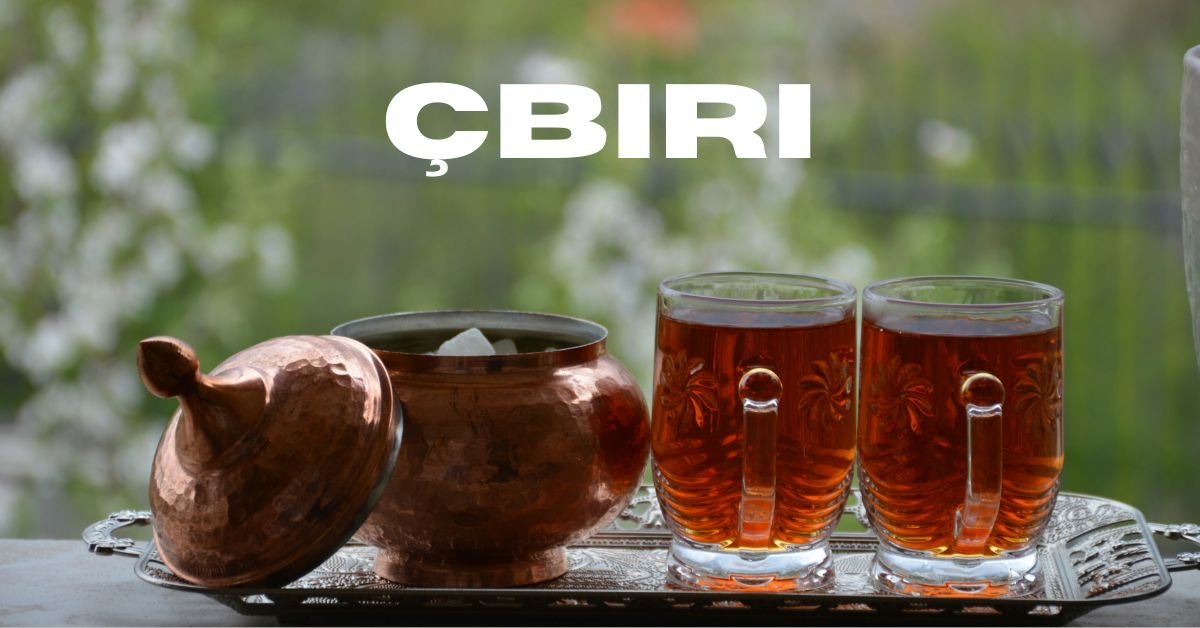Çbiri: The Ancient Beverage Blending Tradition, Flavor, and Wellness
Have you ever sipped a drink that connects you to centuries of history while boosting your health? Çbiri does just that. This traditional beverage, rooted in ancient customs, offers a unique mix of cultural depth and modern appeal.
Çbiri stands out as a fermented drink passed down through generations. It originates from Central Asia and rural communities, where it has long symbolized hospitality and community bonds. Today, you can find it gaining popularity in wellness circles and culinary experiments.
The Origins and History of Çbiri
Çbiri traces its roots to nomadic tribes in Central Asia. These groups discovered its properties during long journeys, using local resources to create a nourishing refreshment. Over time, trade routes spread çbiri across regions, including parts of Turkey and beyond.
Historical records show çbiri in ceremonies and daily life. It evolved from simple recipes to varied forms, adapting to local ingredients. Families preserved methods orally, ensuring each batch carried stories of resilience and adaptation.
As empires rose, çbiri became a staple in feasts and rituals. Its enduring presence highlights how traditions survive amid change. You might relate it to similar drinks like kefir or kumis, but çbiri holds its own distinct heritage.
Cultural Significance of Çbiri
Çbiri goes beyond quenching thirst; it fosters connections. In many cultures, sharing çbiri signals warmth and unity. Hosts offer it to guests during gatherings, weddings, or harvest celebrations.
This beverage plays a key role in rituals. Elders teach younger generations its preparation, strengthening family ties. Regional twists reflect local pride, with each version telling a story of identity and belonging.
Today, çbiri preserves heritage in a globalized world. It reminds you of ancestral wisdom during social events. For more on cultural drinks, check our related post on ancient fermented traditions.
How Çbiri Is Made: Traditional Recipes and Methods
Making çbiri involves care and patience. Start with quality base ingredients, which vary by region. Common options include milk for creamy versions or grains like barley for effervescent ones.
For a milk-based çbiri:
- Warm fresh milk to the right temperature.
- Add yogurt culture to kickstart fermentation.
- Let it sit overnight, then strain for smoothness.
- Mix in spices like mint or cumin for flavor.
Grain-based methods differ. Grind barley or wheat, mix with water, and add hops or herbs. Introduce yeast for fermentation, which takes days. Bottle the result after filtering.
These steps honor tradition while allowing personal touches. You can try this at home with basic tools, but respect the process for authentic taste.
Health Benefits of Çbiri
Çbiri packs nutritional power through fermentation. It delivers probiotics that support your gut health and improve digestion. Regular sips can enhance nutrient absorption and boost immunity.
Antioxidants in çbiri fight oxidative stress, potentially lowering inflammation. Some variations aid blood sugar control, helpful for steady energy. It’s low in calories, making it a smart swap for sugary drinks.
Research from traditional practices shows it promotes heart health by reducing cholesterol. Enjoy çbiri as part of your routine for these perks. Always consult a doctor for personalized advice.
Here are key health benefits in a list:
- Probiotics for better gut flora and digestion.
- Antioxidants to combat chronic conditions.
- Vitamins and minerals for immune support.
- Anti-inflammatory effects for overall wellness.
- Hydration with natural flavors, minus excess sugar.
Modern Variations and Uses of Çbiri
Çbiri adapts well to today’s lifestyles. Chefs blend it into cocktails, adding spirits and fruits for refreshing twists. You might spot it in smoothies or salad dressings for a tangy kick.
Regional variations shine in modern settings. Eastern Turkish styles use cinnamon and cardamom for warmth. Coastal ones add citrus for zest. Herbal infusions from Central Anatolia focus on health.
Artisanal producers now emphasize organic ingredients. Social media influencers share recipes, sparking interest among younger crowds. Explore our post on modern twists to traditional beverages for ideas.
The table below compares common variations:
| Variation | Base Ingredient | Key Flavors | Best For |
| Milk-Based | Fresh milk and yogurt | Creamy, tangy | Daily hydration and gut health |
| Grain-Based | Barley or wheat | Effervescent, hoppy | Social gatherings and energy boost |
| Spiced | Milk or grains with herbs | Aromatic, warm | Wellness routines and cold weather |
| Fruity | Fruits like apples or pears | Sweet, refreshing | Modern cocktails and snacks |
These options let you customize çbiri to your preferences.
Why Çbiri Matters Today
In a fast world, çbiri offers a pause for authenticity. It connects you to cultural roots while fitting wellness trends. As interest in natural foods grows, this beverage stands out for its heritage and benefits.
Rediscover çbiri through local markets or home brewing. It fosters mindfulness and community, values we need now. Embrace it to enrich your life with flavor and history.
FAQ
Q1: What is çbiri and where does it come from?
Çbiri is a traditional fermented beverage originating from Central Asia, used by nomadic tribes for nourishment and later spread through trade routes.
Q2: What are the main health benefits of çbiri?
Çbiri provides probiotics for gut health, antioxidants to reduce inflammation, and vitamins for immunity, making it a natural wellness choice.
Q3: How do you make traditional çbiri at home?
Warm milk or mix grains with water, add culture or yeast for fermentation, then strain and flavor with spices like mint for an authentic batch.
Q4: Is çbiri similar to other drinks like kefir or beer?
Yes, milk-based çbiri resembles kefir for its creamy texture, while grain-based versions share fermentation traits with light beers, but with unique cultural twists.
Q5: What cultural role does çbiri play in communities?
Çbiri symbolizes hospitality and unity, often shared during rituals, gatherings, and festivals to strengthen social bonds and preserve heritage.
Q6: Are there modern ways to enjoy çbiri?
Absolutely, try it in cocktails, smoothies, or dressings; influencers and cafes experiment with organic variations for contemporary appeal.
Q7: What ingredients are commonly used in çbiri?
Base ingredients include milk, yogurt culture, barley, wheat, hops, or fruits, with regional additions like cinnamon, citrus, or herbs for flavor.
Q8: Why is çbiri gaining popularity today?
Its health benefits, cultural depth, and versatility in modern recipes make çbiri a sought-after alternative to processed drinks in wellness-focused lifestyles.
Q9: Can çbiri help with digestion?
Yes, the probiotics from fermentation support gut flora, aiding digestion and nutrient absorption when consumed regularly.
Q10: How has çbiri evolved over time?
From ancient nomadic recipes to modern artisanal versions, çbiri adapts with new flavors while honoring traditional methods and regional diversity.














Post Comment